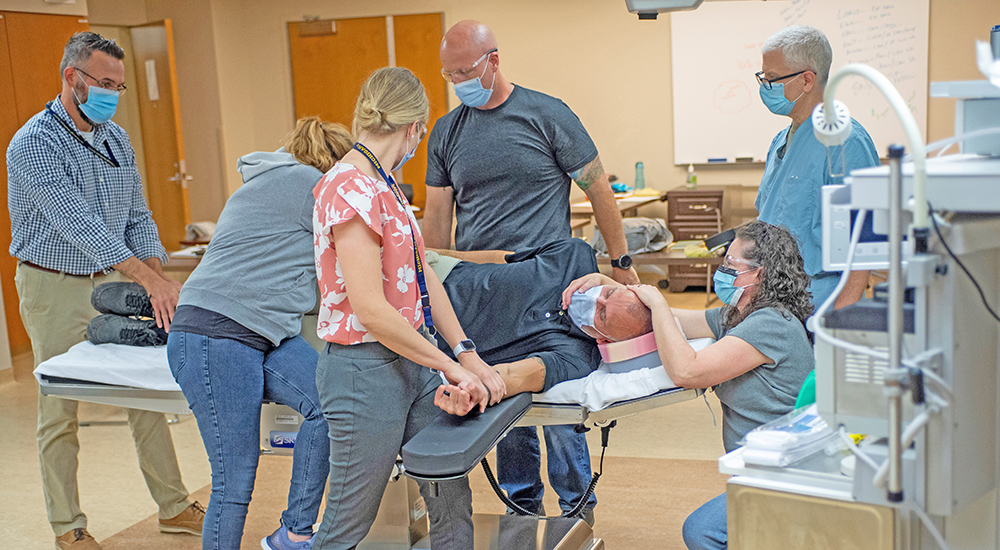Emergence delirium is a temporary condition associated with a patient awakening from an anesthetic. It may also occur when a patient awakens after sedatives or analgesics.
During the condition, patients risk harming themselves or staff by engaging in dangerous behavior, which may include thrashing, kicking, punching, attempting to exit the hospital bed, or attempting to remove medical apparatuses.
A multidisciplinary team at Pittsburgh VA developed and implemented a multicomponent intervention to reduce the severity and occurrence of emergence delirium. Their initiative substantially reduced the occurrence and severity of emergence delirium and related patient and staff injuries.
“Since implementing the intervention, we have not had any dangerous patient behavior or serious safety events because our prevention strategies are effective,” said William M. Pileggi, a nurse anesthetist for Pittsburgh VA.
The intervention has 21 clinical components which are implemented on a patient-by-patient basis. They include routine screening for risk factors, enhanced communication among staff, adjusting the environment, following a specific medication strategy, and application of manual restraint, if necessary.
Staff from Pittsburgh VA partnered with the Patient Safety Authority in Pennsylvania to develop an article about the intervention to help other health care facilities learn about and adopt the intervention.
PAASO: Preoperative Anesthesia Assessment, Medication Strategy, Outcome
One of the key features of the intervention calls for anesthesia providers and nurses to use a PAASO form: Preoperative Anesthesia Assessment, Medication Strategy, and Outcome.
The form has these objectives:
- Identify (screen) patients who are at an elevated risk for emergence delirium;
- Gather information to orient the patient upon emergence;
- Facilitate patient hand-offs between staff;
- Guide and document medication strategy;
- Collect information for patient’s record.
The form is also designed to improve continuity of care, track and trend the intervention across staff, and monitor the overall effectiveness of the intervention.
Medication strategy for patients at elevated risk for emergence delirium
Another key feature of the intervention is the medication strategy, which is designed to reduce the likelihood of emergence delirium. For patients identified as moderate to high risk for emergence delirium, the medication strategy includes the following:
- Avoidance of midazolam and volatile anesthetics;
- As an alternative, use of propofol, dexmedetomidine, and ketamine.
More information about the intervention.
We credit Michael Boland, Monique Y. Boudreaux-Kelly, David V. Julian, and Amanda K. Beckstead for their role in development of the intervention.
Topics in this story
Link Disclaimer
This page includes links to other websites outside our control and jurisdiction. VA is not responsible for the privacy practices or the content of non-VA Web sites. We encourage you to review the privacy policy or terms and conditions of those sites to fully understand what information is collected and how it is used.
More Stories
Study underscores important role COVID vaccination can have in protecting Veterans from infection and reducing long-term health consequences
Columbia VA’s robotic surgery teams completed their 800th robotic surgery and are on schedule to hit 1,000 by the end of the year.
In a decentralized clinical trial, Veterans can participate from their own homes or local VA instead of having to travel to a research site.







I had a surgery at Seattle VA hospital 2014.
The Anesthesiologist did not properly minister the sedation in my back.
Unfortunately I awoke mid surgery on a laser partial hysterectomy and was flopping around on the operating table like a fish out of water.
The surgery doctor never came to my room afterwards to check on me.
I have been scared for life.